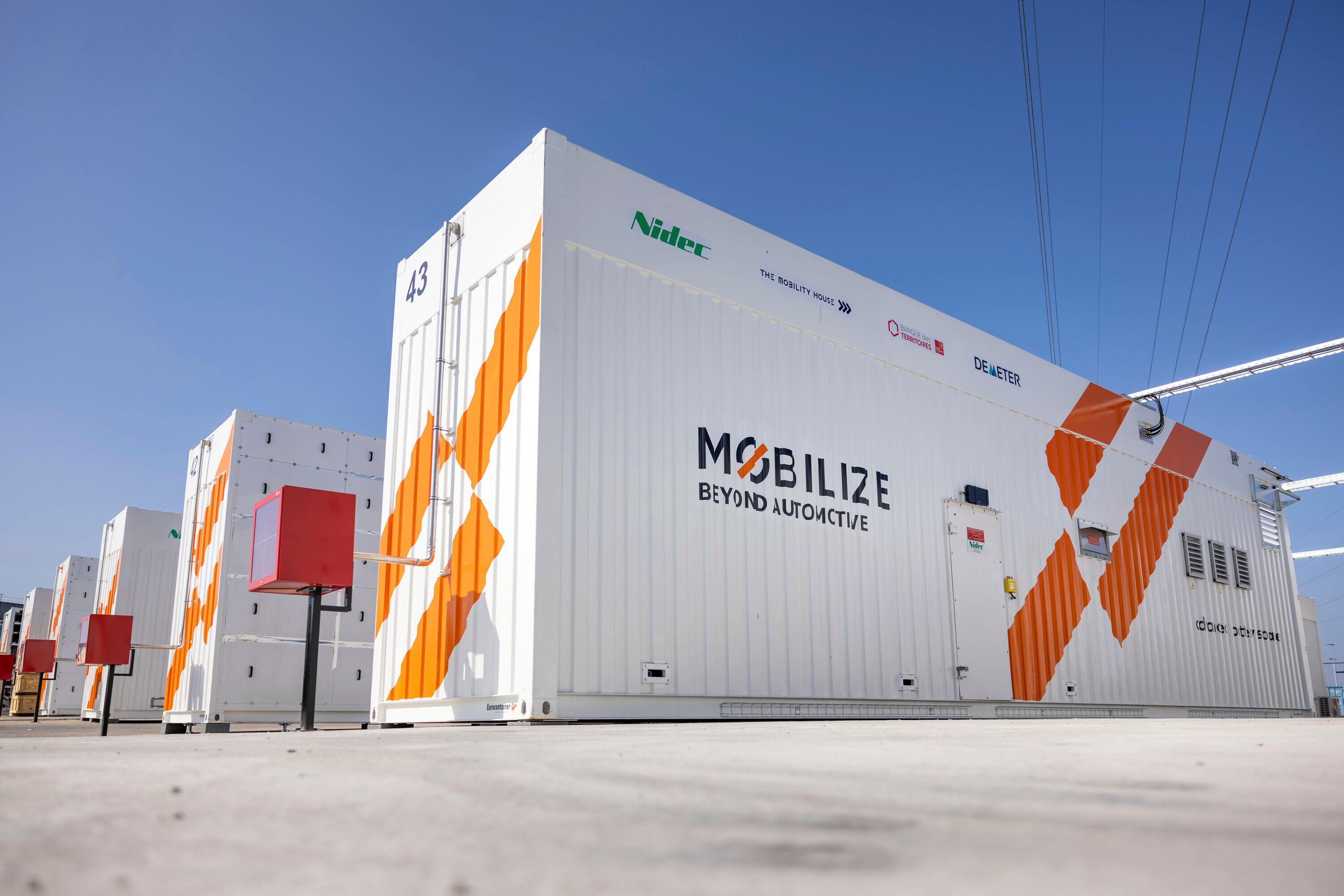1. What does BESS stand for?
The term BESS is on everyone's lips. Battery storage systems are the key element when it comes to storing renewable energy. But what exactly does this mean? And what can these storage systems actually do?
BESS is short for Battery Energy Storage System. It means storing electricity in batteries so you can use it later, like saving energy when demand is low and using it when demand is high. The Mobility House has been working with this technology since 2016.
2. What are BESS's main features?
BESS have in general the following features:
- Battery types: Usually lithium-ion, but also sodium-sulfur or redox-flow.
-
Storage sizes:
- Home: ~5–15 kWh
- Businesses/apartments: 50–1,000 kWh
- Large systems: Several MWh to 1 GWh
-
Common uses:
- Energy trading
- Grid stability (e.g., balancing frequency)
- Reducing peak demand costs
- Storing renewable energy (solar, wind)
- Backup power
- Supporting electric vehicle infrastructure
3. Why do we need Battery Energy Storage Systems in Germany?
Sometimes the amount of renewable energy produced during the day is more than what we actually need. Ideally, we could store solar and wind power to use later. BESS can do exactly that: they balance out fluctuations in energy production. With battery storage systems, we can partly replace coal or gas power plants, which is much better for the environment.
- Capture excess energy: Solar and wind sometimes produce more than needed. BESS stores the surplus for later.
- Backup during outages: Useful for hospitals, data centers, traffic systems.
- Cost savings: Charge when electricity is cheap, use when prices rise.
4. What are the advantages?
Fast response
Instant power when needed.
Modular
Easy to expand by adding battery units.
No emissions of CO₂
Unlike diesel generators or gas power plants, BESS work purely electrically. This means: no emissions of CO₂, NOₓ, or fine dust. A BESS doesn’t produce electricity itself — it simply stores electricity, for example from wind or solar energy, so it can be used later.
5. How does a BESS work?
A typical BESS includes:
- Batteries - store DC electricity.
- Battery management system - monitors and protects.
- Inverter - converts DC to AC for the grid, and vice versa.
- Control software - decides optimal times to charge or discharge based on demand, prices, and weather.
Simple example how the system works:
- Daytime (solar surplus): The sun is shining at noon. Solar panels produce a lot of energy. The Battery charges like a big power-bank, using solar power.
- Evening (high demand): In the evening, when people are coming home from work, using light, etc., a lot of energy is needed. After 8 p.m. the sun is setting and there's no wind to turn the wind turbines. Now the battery discharges stored energy into the grid.
6. How would an example look like?

Let’s take a look at our dashboard in May 2025: Here you can see the daily revenues generated by a 10 MW / 20 MWh battery storage system with an average of two cycles per day, achieved through our algorithm.
The revenues consist of trading on the spot markets (shown in green in the graphic) and on the balancing markets (primary and secondary, in blue and turquoise, respectively). By participating in the balancing markets, our battery storage systems help to keep the grid stable.
7. What's next for Battery Energy Storage Systems?
Current technology
Energy storage systems vary in size depending on their purpose and application. The capacity ranges from a few kWh to several MWh. This allows fluctuations in the grid and bottlenecks in renewable energies such as solar and wind power to be ideally balanced out. High-capacity batteries and intelligent charging and energy management are already making flexible solutions for different applications possible.
In the future
It is foreseeable that the demand for electrical energy will continue to rise. Then we will no longer be talking about kWh or MWh, but about gigawatt hours (GWh). At the same time, the demands on electricity storage systems will also skyrocket. At the same time, however, more and more electrical energy will be generated due to the constant expansion of renewable energies.
In summary:
- BESS means storing electricity in batteries to use it later.
- They help stabilize grids, save costs, and support renewables.
- They respond fast, are expandable, and emit no local pollution.
- Systems are growing: home-sized to large grid-scale.
- The future promises rapid growth, lower costs, and smarter integration.
